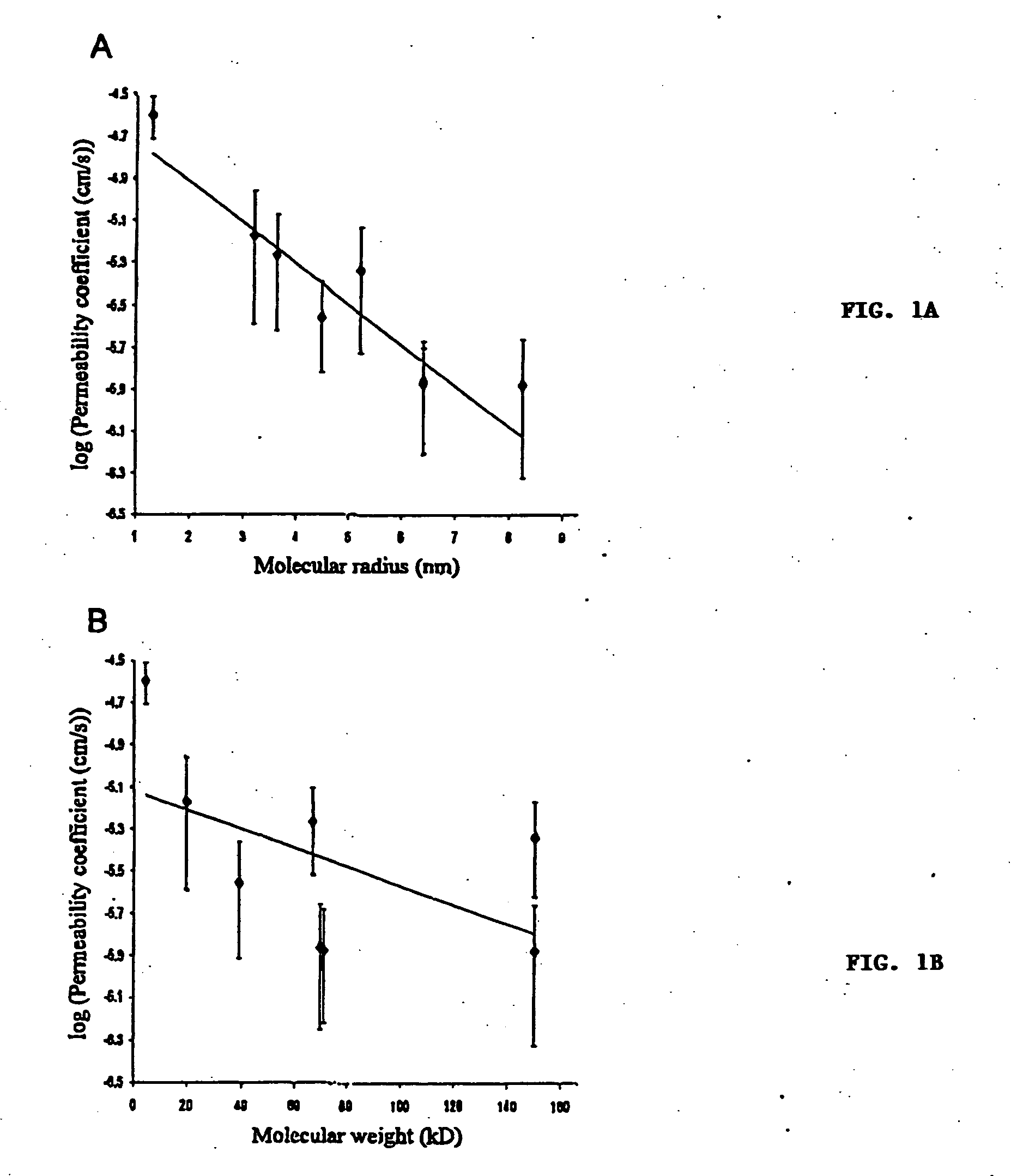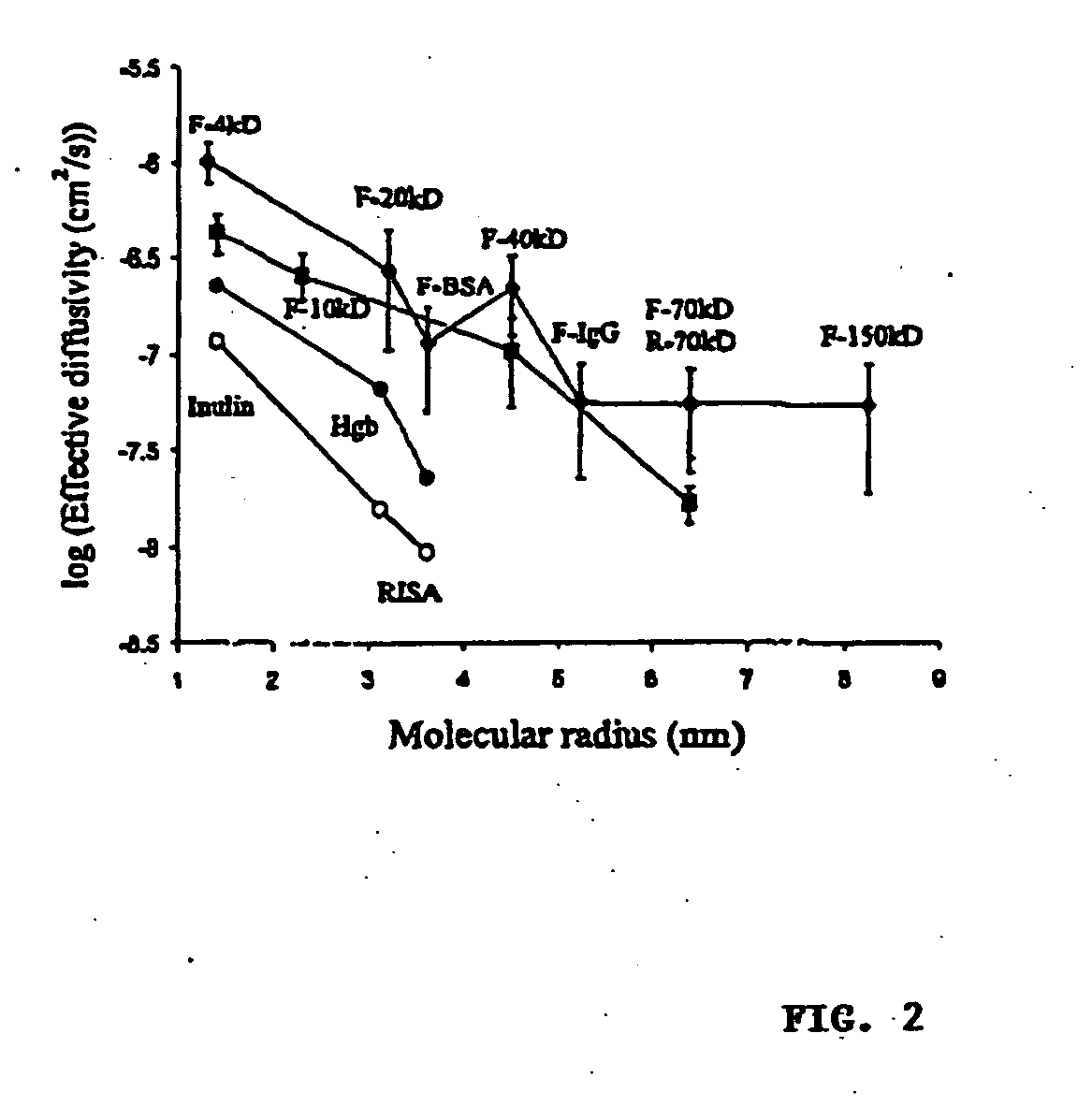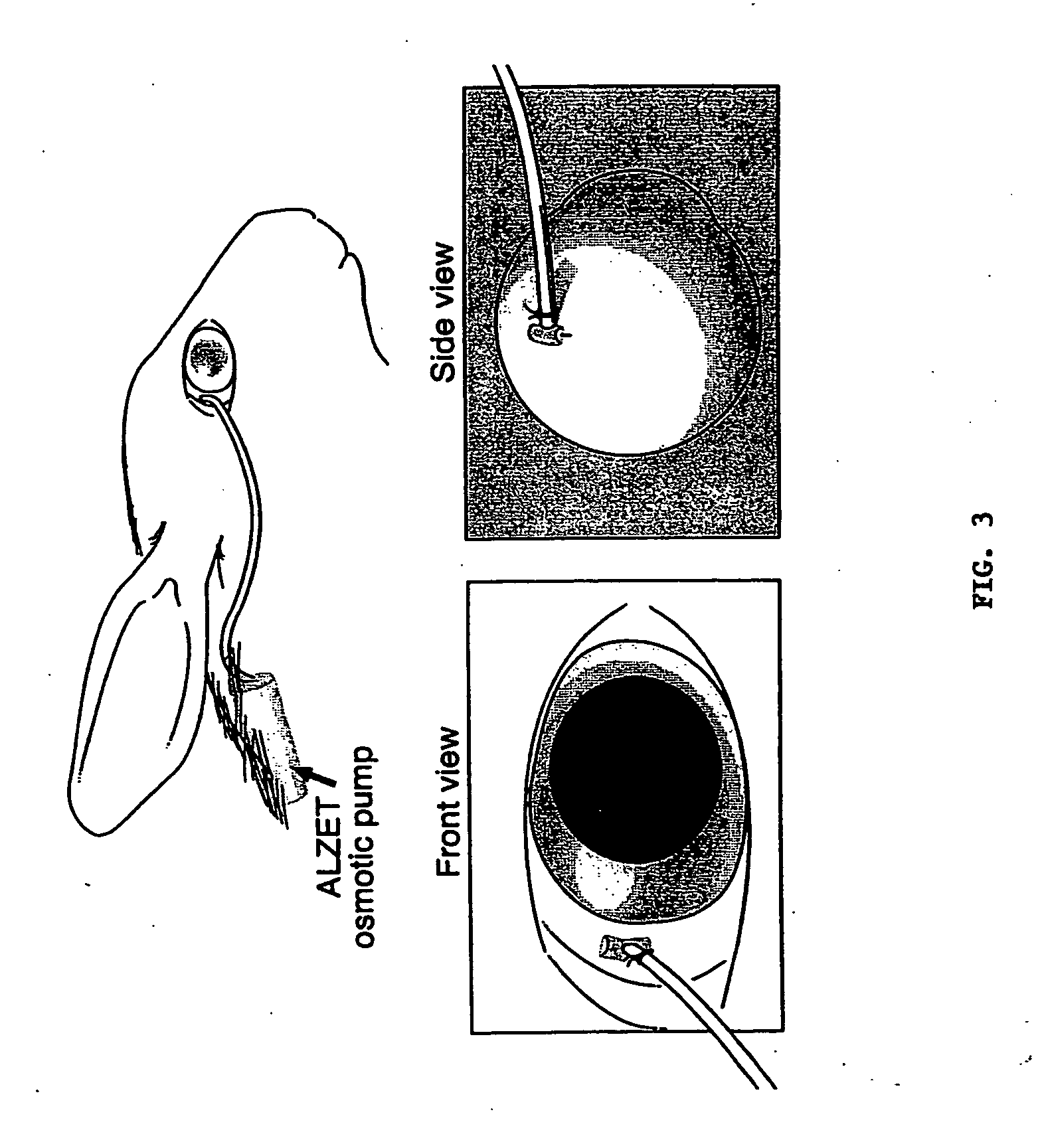Targeted transscleral controlled release drug delivery to the retina and choroid
a technology of transscleral controlled release and drug delivery, which is applied in the field can solve the problems of affecting the treatment effect of retinal and choroidal diseases, affecting the ability of the retina to absorb biologic agents, so as to achieve the effect of minimal systemic absorption and toxicity
- Summary
- Abstract
- Description
- Claims
- Application Information
AI Technical Summary
Benefits of technology
Problems solved by technology
Method used
Image
Examples
example 1
In Vitro Diffusion of High Molecular Weight Compounds Through Sclera
Isolation and Preparation of Fresh Rabbit Sclera
[0054] Dutch-belted rabbits (Pine Acres Rabbitry, Vermont, Mass.), each weighing 2-3 kg, were anesthetized with intramuscular 40 mg / kg ketamine (Abbott, N. Chicago, Ill.) and 10 mg / kg xylazine (Bayer, Shawnee Mission, Kans.). Scleral thickness was measured using a RK-5000 ultrasound pachymeter (KMI Surgical Products, West Chester, Pa.). The eyes were enucleated immediately before sacrifice and immersed in Unisol (Alcon, Ft. Worth, Tex.) for 10 minutes or less. The adherent muscles were excised and episcleral tissue was removed with a sterile gauze sponge. Areas free of nerve and vessel emissaries were used to obtain 7×12 mm slices of sclera under microscopic caliper guidance. Each piece of sclera was used on the day of isolation.
[0055] A 5×10 mm window, 2 mm from the bottom, was created on one face of a spectrophotometry polystyrene c...
example 2
Osmotic Pump Implantation
[0074] Dutch-belted rabbits were anesthetized with intramuscular ketamine (40 mg / kg; Abbott, N. Chicago, Ill.) and xylazine (10 mg / kg; Bayer, Shawnee Mission, Kans.). Osmotic pumps (ALZET, ALZA, Palo Alto, Calif.) were loaded with drug and incubated at 37° C. prior to implantation. The osmotic pump was implanted subcutaneously between the scapulae and connected to a brain infusion kit (ALZA), which was modified so that the tip could be secured to, and face, the orbital surface of the sclera with a single biodegradable polyglactin 910 suture (Ethicon, Somerville, N.J.) in the superotemporal quadrant of the eye, 14 to 16 mm posterior to the limbus (near the equator) (FIG. 3). Care was taken to make a partial thickness pass through the sclera. If uvea, blood or vitreous was observed during the procedure, the experiment was terminated.
example 3
Collection of Ocular Tissue and Blood
[0075] Blood was collected by cardiac puncture prior to surgical enucleation of the eyes under deep anesthesia. Aqueous humor of each eye was collected using a 30-gauge needle. Vitreous humor, retina, choroid, and orbital tissue of both eyes were dissected and isolated under a microscope. The choroid of the treated eye was separated into two hemispheres, proximal (in which the tip of the pump was centered) and distal to the tip of the pump. Animals were sacrificed with intracardiac pentobarbital (100 mg / kg) (Vortech, Dearborn, Mich.).
PUM
| Property | Measurement | Unit |
|---|---|---|
| molecular weight | aaaaa | aaaaa |
| molecular weight | aaaaa | aaaaa |
| molecular weight | aaaaa | aaaaa |
Abstract
Description
Claims
Application Information
 Login to View More
Login to View More - R&D
- Intellectual Property
- Life Sciences
- Materials
- Tech Scout
- Unparalleled Data Quality
- Higher Quality Content
- 60% Fewer Hallucinations
Browse by: Latest US Patents, China's latest patents, Technical Efficacy Thesaurus, Application Domain, Technology Topic, Popular Technical Reports.
© 2025 PatSnap. All rights reserved.Legal|Privacy policy|Modern Slavery Act Transparency Statement|Sitemap|About US| Contact US: help@patsnap.com



